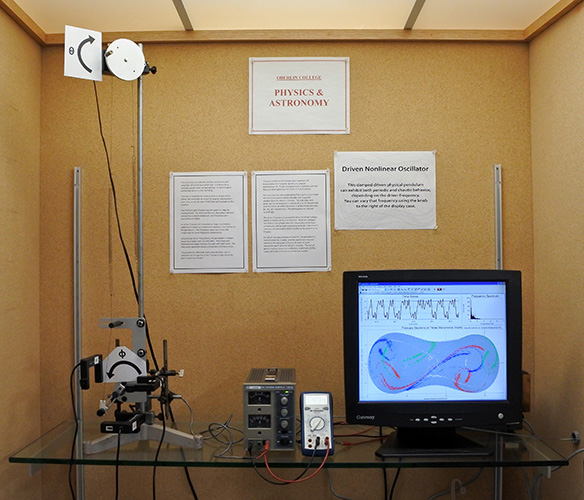Set up the nonlinear oscillator in the
usual manner. Position photogates 120 degrees apart and so
the driver passes through each one, once per cycle.
Use the LoggerPro 3 "poincare
display" experiment file.
Settings are:
ch1,
2, 3 = raw voltage, to read photogate voltages (note
that the photogates are plugged into the analog channels
so their voltages can be read)
- digital input 2 = rotary
motion sensor/angular/high resolution
the angular position at constant phase = angular
position / photogate state, where photogate state = 1
when the photogate is blocked, and zero otherwise
- experiment length =
60 minutes, set to repeat
- sample rate = 100 pts/s
graphs:

